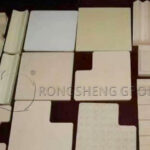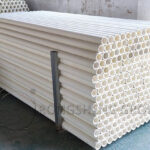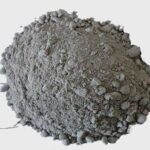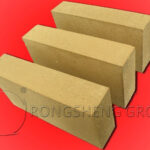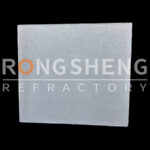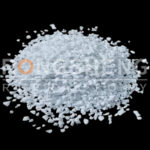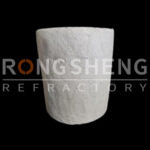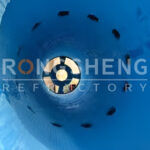Low Thermal Conductivity Sic Mullite Bricks
Low Thermal Conductivity Sic Mullite Bricks Description
Silicon carbide mullite bricks are the most preferred refractory material for non-sintering zone of middle and large scale cement rotary kiln. Silicon carbide mullite bricks usually adopts high Al2O3 content natural bauxite clinker as main raw material, which has corundum principle phase and good thermal conductivity. The second largest component, silicon carbide, also have good thermal conductivity, so the thermal conduction coefficient of silicon carbide mullite bricks is high and lead to the over high temperature of rotary kiln surface temperature. which in turn,results in the increase of fuel consumption and the decline of energy efficiency. To decrease the thermal conductivity while maintaining the high temperature performance of silicon carbide mullite bricks, low thermal conductivity multi-layer composite mullite bricks ae developed.
Low Thermal Conductivity Sic Mullite Bricks Production Crafts
Low thermal conductivity SiC mullite bricks adopt multi-layer composite structure design which is composed of working layer, insulation layer and a heat preservation layer. Instead of natural bauxite clinker, bauxite-based sintered mullite is used as the main raw material. Its main mineral phase is mullite, so that the overall thermal conductivity of the SiC mullite brick is reduced, and the high-temperature structural strength is effectively enhanced. In light of the poor basic slag erosion resistance of mullite, some composite additives is added into the raw material to improve matrix property, the alkali corrosion resistance of the refractory brick is enhanced. In order to further reduce the thermal conductivity of the working layer, 97# silicon carbide fine powder with good crystal development and andalusite fine powder are added to strengthen the matrix, which not only reduces the thermal conductivity, but also improves the high-temperature structural strength , as well as thermal shock resistance of SiC mullite brick.
Working layer: M70 alumina-based sintered mullite is used as the main raw material, homogenized bauxite is used as aggregate and powder, multi-element additives such as andalusite and silicon carbide are added to prolong the service life.
The Physiochemical Index of Working Layer
| Item | Low thermal conductivity SiC mullite bricks |
| Al2O3 % ≥ | 67 |
| Apparent porosity % ≤ | 20 |
| Bulk Density g/cm3 ≥ | 2.70 |
| Cold crushing strength Mpa | 90~100 |
| Refractoriness under load ℃ | ≥1650 |
| Thermal shock resistance /times(1100℃,water cooling) | ≥30 |
| Thermal conductivity W/(m·K) | ≤1.65 |
Insulation layer: mainly mullite phase, using M60 alumina-based sintered mullite as the main raw material, added with some composite additives to adjust the expansion coefficient to make it close to the working layer, avoiding cracks from the joint during sintering or application. Under the premise of satisfying the strength requirement, thermal insulation effect is maximally improved.
Insulation: Thermal conductivity is an important indicator for thermal property of refractory materials. By adding a composite material with a lower thermal conductivity to the insulating layer, the overall thermal conductivity of silicon carbide mullite brick is reduced.
Low Thermal Conductivity Silicon Carbide Mullite Bricks Application
Low thermal conductivity silicon carbide mullite bricks is especially suitable for the fore- transition zone of medium & large scale rotary cement kilns. In the area where Silicon carbide mullite composite bricks are used, the cylinder temperature can be reduced by 50~80 °C. The average temperature of the fore transition zone is 250 °C, and the thermal insulation effect is very significant. The service life of low thermal conductivity SiC mullite bricks is not lower than that of spinel brick, silicon carbide mullite bricks and silicon carbide andalusite bricks. Apart from being applied to the fore transition zone of the rotary kiln, low thermal conductivity SiC mullite bricks are also used in the tertiary air duct, grate cooler side wall and so on.
